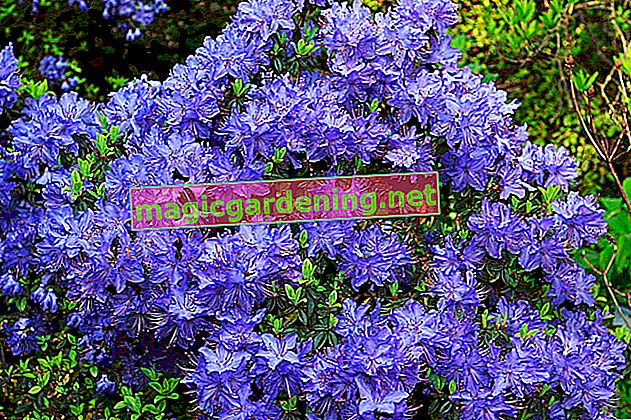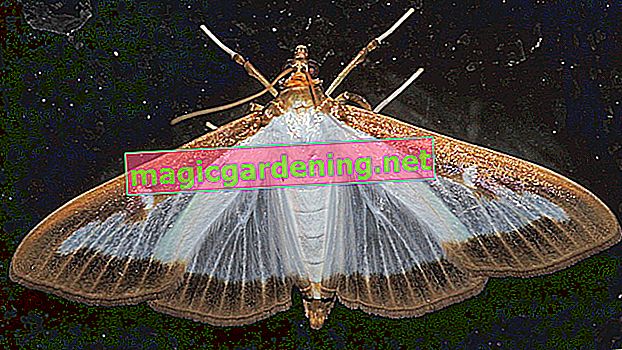
Origin and Distribution
Ferns can be found all over the world: around 12,000 different species are known, most of which come from the tropical regions of the world - only around 170 species are distributed throughout Europe. However, these attractive plants have one thing in common: with a few exceptions, they all prefer rather moist and shady locations as typical tree dwellers. Fern plants have been native to the earth for a very long time: The oldest finds come from the Devonian geological age and are dated around 400 million years ago. The indoor ferns that we like to cultivate in the living room or bathroom also look back on a very long history. Most of the species sold for pot cultivation come from tropical and subtropical rainforests and are therefore not hardy.
also read
- Identify indoor ferns correctly and assign them to a subspecies
- With this care, the indoor fern thrives splendidly
- Fan palm: characteristics and care
Appearance and stature
The different types of the house fern have a very different appearance. Depending on the type and variety, the characteristic leaf fronds can be only 20 centimeters or up to one and a half meters long. The type of reproduction is also typical: ferns form spore capsules on the underside of the leaves through which they practically sow themselves. The ripe spores are sometimes noticeable as a fine, dark powder on the window sill. Flowers and seeds, on the other hand, are not formed, which is why they are pure decorative leaf plants.
Toxicity
The bracken is the most poisonous fern species in our country. Like this one, the house ferns are all poisonous for humans and animals and should therefore be placed in such a way that children and pets do not have access to the plants. The mere touch alone does not trigger any symptoms, but consumption of the green fronds can lead to typical symptoms of poisoning such as vomiting, diarrhea and nausea. A doctor should be consulted immediately.
Which location is suitable?
The indoor fern feels most comfortable in a light to partially shaded, but not directly sunny location. Most species are also quite sensitive to drafts and temperature fluctuations, which is why you should not place them near a frequently opened window or door. Most indoor ferns also need a high level of humidity as they live in the rainforest and are therefore best placed in a bright bathroom.
Substrate
For indoor fern it is best to choose a well-drained, loose and humus-rich substrate. Make sure you buy one that is compost-based if possible, as peat is a poor choice for a number of reasons - even if these soils are cheaper. Mix the humus soil with clay granulate or expanded clay (€ 17.50 at Amazon *) to improve permeability and thus avoid waterlogging from the outset.
Plants / repotting
Put the indoor fern in fresh substrate and a larger pot immediately after buying it - the plants are usually in planters that are much too small, so that they benefit from quick transplantation. Young ferns should be transplanted into a larger container every one to two years, older ferns only get fresh substrate. Good drainage is essential so that excess irrigation water can drain away unhindered.
Pour indoor fern
Although indoor ferns do not like waterlogging, they also cannot tolerate dry root balls - so both a permanently moist and a dried-out substrate should be avoided as much as possible. It is best to water the plant whenever the top layer of the potting soil has dried - and then calmly penetrate it. Immediately pour drained water out of the pot or saucer. Occasionally you can also immerse the plant, ie place the root ball (in the plant pot!) In a bucket filled with water for a few minutes. Then let it drain well.
Fertilize indoor fern properly
If the indoor fern is potted annually in fresh, humus-rich substrate, additional fertilization is basically not necessary. If this is not the case, provide the plant with a low-dose liquid fertilizer for green plants every 14 days between April and October. There is no fertilization in winter.
How to cut the fern correctly
Indoor ferns are quite insensitive to cutting measures and usually tolerate them very well. Some fast-growing species can be kept compact by carefully pruning, and brown and dried-up fronds should be removed as soon as possible. Older specimens also benefit from more pruning and then sprout many fresh shoots - the plants are rejuvenated, as the gardener calls it.
Propagate indoor fern
You can easily multiply an older room fern by dividing it. But the fronds that carry spores can also be used to obtain new plants. However, you need a lot of patience for this, because it can take up to a year for the young ferns to be recognized as such. And that's how it works:
- Cut off fronds with ripe spores
- place on a sheet of paper and leave in a warm place for two days
- fill a flat vessel with growing substrate (9.05 € at Amazon *)
- moisten this well
- Spread spores on it
- Cover the vessel with plastic film or similar
- Put in a dry and warm place
- Keep the substrate slightly moist at all times
- Ventilate daily to avoid mold growth
After about three months - if it worked - a greenish coating appears on the substrate surface. It is not mold, but the fern seedlings. However, they are only recognizable as such after a few more months.
Overwinter
In winter there are no special care instructions for most species, with the exception of humidity. During the heating season the air is particularly dry, which is why you should counteract this with a humidifier or similar.
Diseases and pests
When it comes to disease and pests, indoor ferns are quite tough, provided they are properly cared for. Annoying leaf suckers such as spider mites, scale and aphids usually only occur when the plant is too dry.
Tips
Many indoor ferns can be kept very well in hydroponics, so that the maintenance effort is further reduced.
Species and varieties
Indoor ferns are decorative and - with proper care - long-lasting indoor plants. We present the most beautiful types for living rooms and Co. at this point.
(Hanging) sword fern
The sword fern has been cultivated for a very long time: the fern, originally native to the tropical regions of Africa, South America and Asia, has been enjoying great popularity in the home and garden for 200 years. This is not a single species, but a genus comprising around 30 different species, which in turn belong to the sword fern family (bot. Nephrolepidaceae). The well-known upright sword fern (bot. Nephrolepis exaltata), which is extremely decorative with its pinnate, light green leaves up to 150 centimeters long, is particularly suitable for the room. The fronds grow upright to slightly overhanging, depending on the variety, and can be curled, wavy or twisted. The corded sword fern (bot. Nephrolepis cordifolia) is also common,which comes up with smoother leaflets. Both types are particularly effective as imposing solitaires in hanging baskets or on plant pillars.
Maidenhair fern
The maidenhair fern (bot. Adiantum raddianum) has a filigree and dainty appearance, to which the countless fresh green and very fine leaves on the thin, shiny and black-brown leaf stalks contribute significantly. The feathered fronds grow upright at first, later overhanging, and can be up to 50 centimeters long and allow water to simply roll off. Maidenhair ferns are found all over the world, some species are even at home in the Alps. However, the varieties cultivated as indoor ferns are all of tropical origin and therefore not winter hardy. This plant feels most comfortable in a bright bathroom due to the high humidity.
Antler fern
The bizarre-looking antler fern (bot. Platycerium) lives up to its name: The up to one meter long, green leaves branch out over the years like deer antlers. The spore capsules on the underside form large, dark brown and conspicuous areas that are characteristic of the species. In addition, the antler fern develops so-called coat leaves, which turn brown after a while and die. The antler fern is at home in almost all tropical forests in the world, where it grows epiphytically (ie perched) on the trunks or forks of the jungle giants. In the living room, the attractive plant is particularly effective in hanging baskets and, thanks to the waxy surface of the leaves, also feels good in dry room air. These protect the plant from drying out.For this reason, the antler fern should not be sprayed like other indoor ferns. Instead, immerse it in lukewarm water for about a quarter of an hour once a week.
Button yarn
At first glance, the button fern (bot. Pellaea rotundifolia), also known as pellaea rotundifolia, does not look like a fern at all: where filigree fronds are expected, the fur fern family (bot. Sinopteridaceae) has thick, leather-like and shiny leaflets. These are reddish in color when they shoot and are located on the up to 20 centimeters long, dark and creeping fronds. The button fern also differs from other indoor ferns in its other properties: it needs a comparatively bright location, needs only a little watering and is quite insensitive to dry room air and normal tap water.
Nest fern
The elegant nest fern (bot. (Aspenium nidus) has up to 100 centimeters long and 15 centimeters wide leaf fronds, all of which grow from a central point of vegetation and form a funnel-like rosette in the middle - the “nest.” The shiny leaves are undivided and mostly The advantage of the nest fern lies not only in its pretty appearance, but also in the fact that it can cope with very little light. Thus, the plant is also suitable for dark locations, but needs a warm place with temperatures of at least all year round 18 degrees Celsius and a high level of humidity. In addition, the nest fern has a high water requirement and should not only be watered regularly, but also occasionally.Use water with little lime such as rainwater or filtered tap water.
 Compo Sana® quality potting soil, 25 liters 8.99 EUR Buy
Compo Sana® quality potting soil, 25 liters 8.99 EUR Buy  from Pötschke Spruzit® AF pest-free, 500 ml 8.99 EUR Buy from Pötschke
from Pötschke Spruzit® AF pest-free, 500 ml 8.99 EUR Buy from Pötschke








